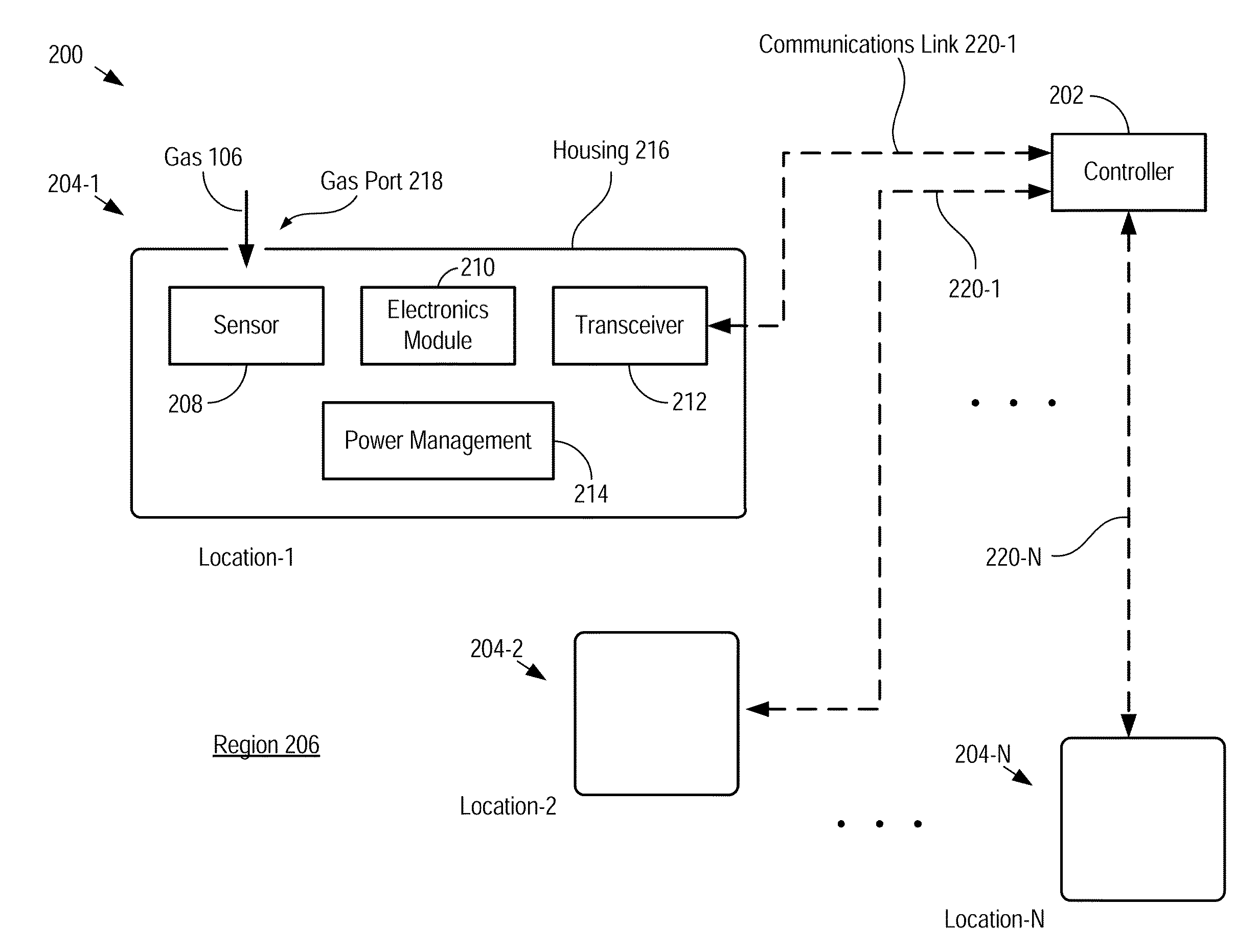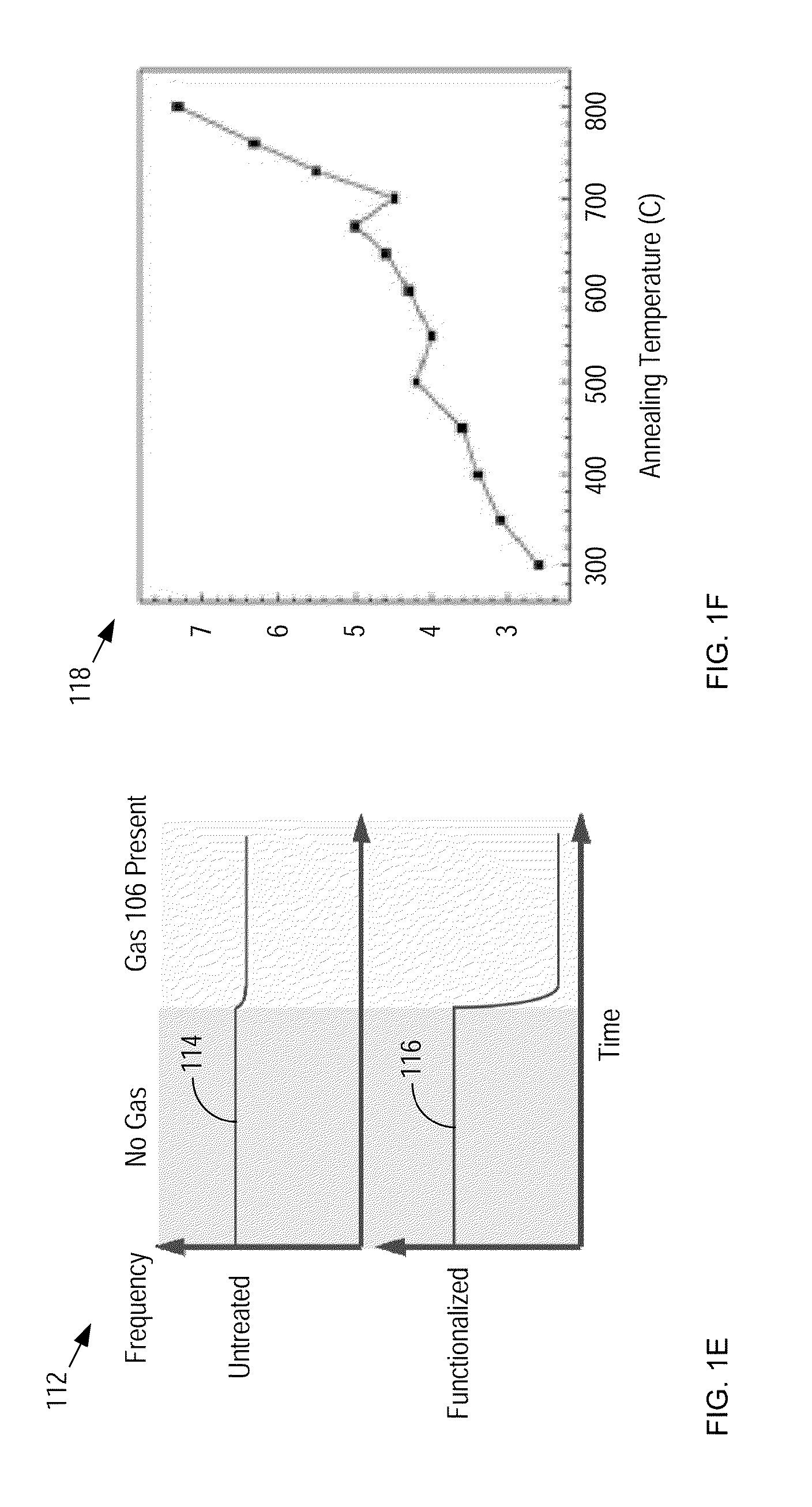System for Detecting a Gas and Method Therefor
a gas detection and gas technology, applied in the field of sensors, can solve the problems of complex spectral analysis systems, large instrument volume, and generally quite expensive, and achieve the effects of low power, high sensitivity, and high speed
- Summary
- Abstract
- Description
- Claims
- Application Information
AI Technical Summary
Benefits of technology
Problems solved by technology
Method used
Image
Examples
Embodiment Construction
Operating Principal of the Invention
[0040]The fundamental operating principle of the present invention is that functionalizing the adsorption surface of a resonant mass sensor with the addition of a selectively chemisorptive layer enables gas detection with significantly improved sensitivity and selectivity as compared to gas sensors of the prior art.
[0041]FIGS. 1A-B depict schematic drawings of a resonant-mass sensor, with and without surface functionalization, respectively. Resonator 100 is a trampoline-type resonant-mass gas sensor having central plate 102, which includes adsorption surface 104. The resonance frequency of sensor 100 is based, primarily on the mass of plate 102. As a result, as molecules of gas 106 adsorb on surface 104, the mass of the plate increases and the resonance frequency of resonator 100 decreases. As depicted in FIG. 1A, untreated surface 104 is characterized by very low sticking and trapping probabilities for molecules of target gas 106. As a result, th...
PUM
| Property | Measurement | Unit |
|---|---|---|
| diameters | aaaaa | aaaaa |
| grain size | aaaaa | aaaaa |
| grain size | aaaaa | aaaaa |
Abstract
Description
Claims
Application Information
 Login to View More
Login to View More - R&D
- Intellectual Property
- Life Sciences
- Materials
- Tech Scout
- Unparalleled Data Quality
- Higher Quality Content
- 60% Fewer Hallucinations
Browse by: Latest US Patents, China's latest patents, Technical Efficacy Thesaurus, Application Domain, Technology Topic, Popular Technical Reports.
© 2025 PatSnap. All rights reserved.Legal|Privacy policy|Modern Slavery Act Transparency Statement|Sitemap|About US| Contact US: help@patsnap.com



